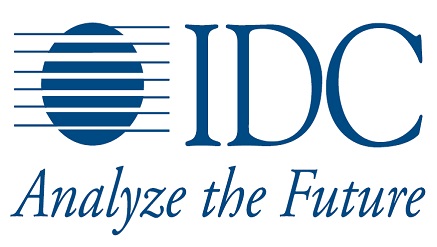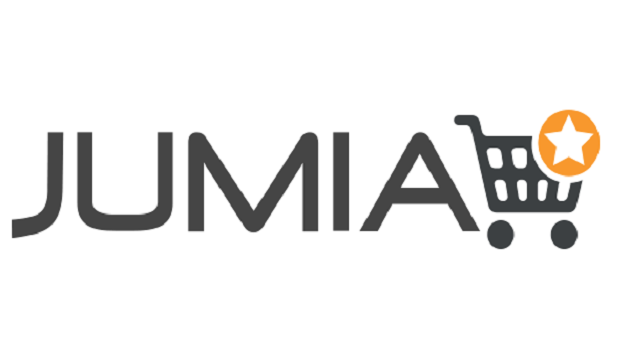E-Business
Mixed Bag for PC Vendors, Decline Continued in 1Q16

Worldwide PC shipments totaled 60.6 million units in the first quarter of 2016 (1Q16), a year-on-year decline of 11.5%, according to the International Data Corporation (IDC) Worldwide Quarterly PC Tracker.
Shipments were in line with conservative expectations for a decline of 11.3%, and anticipated a relatively weak environment during the first half of 2016 as Windows 10 enterprise upgrades largely remained in pilot phase while consumer demand remains weak. The volatility in stocks, commodities and currencies also helped depress shipments.
Inventory reductions in the channel, which were a headwind through much of 2015, seem to be wrapping up.
Similarly, some rebound in economic conditions should support both commercial and consumer activity going forward.
Nevertheless, channels, vendors, and users remain cautious about new purchases. Overall, Asia/Pacific and EMEA performed slightly better than forecast, while the Americas pulled down worldwide results.
“In the short term, the PC market must still grapple with limited consumer interest and competition from other infrastructure upgrades in the commercial market,” said Jay Chou, Research Manager, IDC Worldwide PC Tracker, “Nevertheless, IDC still projects total business IT spending to grow compared to 2015, and as we head toward the end of 2016 things should start picking up in terms of Windows 10 pilots turning into actual PC purchases.”
PC shipments to the U.S. fell 5.8% to 13.6 million units in 1Q16. PC channels remained challenged with aging inventory although inventory churn has reportedly improved throughout the last two quarters. Market inhibitors that were present in 4Q15 lingered through 1Q16.
These issues included softened demand due to global economic concerns, the Windows 10 free upgrade path stalling some consumer PC purchases, and increased attrition towards detachables. “Demand for PCs in the U.S. remains sluggish,” said IDC Research Director, Devices & Displays, Linn Huang. “However, we should be entering a period of reprieve. Peak corporate and education buying seasons have historically started in the second quarter. With some IT buyers thinking about early Windows 10 transitions and with the potential continued ascent of Chromebooks in U.S. K-12, the PC market should experience a modest rebound in the coming months.”
Regional Highlights
United States – Dell overtook HP Inc. for the first place ranking for the first time since the third quarter of 2009, ending a run of 25 consecutive quarters with HP Inc. at the top of the U.S. PC market. Dell’s U.S.
PC shipments rose 4.2% year over year to 3.48 million – good for a 25.6% share. HP Inc’s PC shipments to the U.S. fell 14.1% to 3.44 million units (25.3% share).
Lenovo continued its aggressive growth trajectory as its 1.9 million units shipped represented 21.1% year-over-year growth and accounted for 14.1% of total U.S. PC shipments.
Apple’s Mac shipments rose 5.6% year over year to nearly 1.8 million (13.0% market share).
Acer’s shipments fell 10.4% to 0.7 million, but the company overtook ASUS and Toshiba to regain a seat in the U.S. top five.
Europe, Middle East, and Africa (EMEA) – EMEA PC shipments declined double-digit year over year, which was in line with the forecast. 1Q16 was the last quarter to suffer from an unfavorable year-over-year comparison due to large Bing shipments in the prior year, which significantly affected the consumer market.
Windows 10 had a limited impact on PC renewals as its rapid adoption came mostly from free software upgrades.
The new products launched with Windows 10 and Skylake architecture supported sales growth but could not reverse the overall negative trend.
Asia/Pacific (excluding Japan) – The APeJ PC market continued to decline as end user demand remained soft, while vendors focused on inventory clearing.
Economic uncertainty weighed on the overall market performance across the region, with businesses limiting their investments and many commercial projects being postponed or downsized, while consumer spending was dampened by currency fluctuations and increases in pricing.
Japan – The market performed slightly better than forecast but still had negative growth. Slowing economic outlook and continued uncertainty over currency rates further dampened demand.
Vendor Highlights
Lenovo maintained its top global rank for the quarter with U.S. growth in excess of 20%. However, the company faced a challenging quarter in all other markets with international shipments declining 12.5% from the prior year, bringing total worldwide volume down 8.5% from a year ago.
HP Inc. remained the number 2 vendor as it navigated its separation from HP Enterprise during the quarter. The company struggled with some inventory issues in North America and a continued slow market in Latin America, with total worldwide shipments declining nearly 11% from the prior year.
Dell remained the number 3 vendor globally, outperforming the market with a decline of just 2%, and also pulled to the lead in the United States market. Strong shipments of notebook PCs helped the vendor achieve the best quarter among the top 5 vendors.
Apple took the fourth spot worldwide and continued to outperform the market, thanks to solid growth in North America.
ASUS declined 8.3% from a year ago and dropped to the number 5 position. North America still saw decent uptake, but the vendor faced challenges elsewhere, especially EMEA.
E-Business
GenAI Adoption Among African workers Outpace Global Peers

Africa’s workforce is embracing artificial intelligence (AI) at a faster pace than global peers, but pressure is mounting for organisations to ramp up digital skills development as generative AI (GenAI) begins reshaping roles across industries.

This is according to PwC’s Global Workforce Hopes and Fears Survey 2025, which shows a continent ready for AI-enabled transformation, but facing a narrowing window to prepare, through skills development initiatives.
The survey, covering nearly 50 000 workers worldwide and 1 753 across South Africa, Algeria, Kenya, Morocco and Nigeria, finds that African employees are already integrating AI into daily operations.
Sixty-four percent of respondents in Africa used AI tools in the past year, compared to 54% globally, and the sentiment is overwhelmingly positive. While only 17% report using GenAI every day, confidence in its benefits is high: 76% believe GenAI improves work quality, and 72% expect AI-driven productivity gains within three years.
In SA, executives are even more bullish, as 91% say AI has already lifted both productivity and work quality — a signal that leadership is pushing harder toward AI-enabled ways of working, notes the survey.
However, this optimism is coupled with rising concern about future readiness. Only 35% of African workers believe their skills will still be relevant three years from now. With GenAI expected to affect nearly half of all job roles, PwC warns that the continent’s workforce risks falling behind unless organisations accelerate large-scale reskilling.
Despite the pressures, employees are not standing still. PwC notes that African workers outperform their global peers in proactive learning, recording 15% higher participation in skills-building and receiving 6% more support from managers. This indicates that both workers and immediate supervisors recognise the pace of AI adoption and are pushing to adapt.
PwC Africa people and organisation leader, Dr Dayalan Govender, says the moment calls for decisive leadership. Organisations, he argues, must integrate AI into workforce strategies, accelerate digital adoption, and expand upskilling programmes at scale.
“Africa’s workforce is optimistic and ready for change, but leaders must accelerate digital adoption and invest in future-ready skills to convert this optimism into sustainable growth,” he says.
Beyond the technology shift, the survey captures a workforce hungry for growth but constrained by financial pressure. Many employees are preparing to make career moves: 45% plan to request a raise, and another 45% aim for a promotion in the next year. Yet household financial stability remains strained, with only a third of respondents reporting any money left over for savings.
Still, Africa’s workplaces continue to show strong foundations of trust and purpose — elements PwC believes will be critical in navigating GenAI disruption. More than 55% of workers trust management, and two-thirds say their work feels meaningful, both above global averages.
With AI adoption rising and employees motivated to reinvent their careers, PwC warns that the coming years will determine whether Africa’s early optimism translates into long-term competitiveness as GenAI transforms the world of work.
The report calls for embedding AI into workforce strategies to bridge the gap between optimism and practical adoption, scaling upskilling initiatives to prepare for GenAI disruption, and fostering trust and psychological safety to retain talent and drive innovation.
“For employers, these findings are a stark reminder that they can and should do more to help workers understand, adopt, and embrace AI’s transformative power.
“Employers may need to pay special attention to entry-level workers, nearly a third of whom say they’re worried to a large or very large extent about AI’s impact on their future, even as they’re also curious (47%) and optimistic (38%) about its long-term societal effects,” notes the report.
E-Business
Nigeria Records Highest Weekly Cyberattacks in Africa — Report

Nigerian organisations are facing the highest volume of weekly cyberattacks in Africa, according to the newly released African Perspectives on Cyber Security Report 2025 by Check Point Software Technologies Ltd., a global leader in cybersecurity solutions.

The report revealed that Nigerian firms experience an average of 4,200 attacks per week, significantly higher than the continental average of 3,153 and 60 per cent above the global average of 1,963 attacks per organisation.
The findings highlight a sharp rise in attacks across Africa, driven largely by artificial intelligence-enabled threats.
Kingsley Oseghale, country manager for West Africa at Check Point, said attackers are increasingly using AI to automate phishing, impersonation, and cloud exploitation.
“AI has become part of the attack surface,” Oseghale said. “Attackers are using it to automate phishing and identity theft at scale. The only effective response is prevention-first security that combines visibility, governance, and AI protection.”
The report noted that cybercriminals are exploiting exposed identities and misconfigured systems to target critical sectors, including finance, energy, telecoms, and government.
Identity-led intrusions, AI-generated phishing campaigns, and multi-vector ransomware are on the rise.
Across the continent, Check Point identified key trends in different markets. Nigeria is experiencing business email compromise and cloud exploitation; South Africa faces rising ransomware, smishing, and botnet infections such as Vo1d and XorDDoS; Kenya has seen ransomware targeting critical energy infrastructure; and Morocco has experienced coordinated government and education-sector disruptions via DDoS and website defacement attacks.
The report highlights five major shifts shaping Africa’s cyber risk in 2025.
Traditional ransomware has evolved into data-leak extortion, AI-generated deception is widespread, and identity has emerged as the new security perimeter.
Weak cybersecurity, the report warned, can now affect international market access under regulations such as the EU’s NIS2 Directive, making digital resilience an economic necessity.
The study urged African businesses and governments to adopt prevention-first security strategies, including continuous risk assessment, regulatory readiness, and public-private collaboration.
Oseghale emphasised that, as AI reshapes operations, cybersecurity must shift from reaction to prediction.
“The real challenge is not adopting new technology but securing the trust that underpins it,” he said.
E-Business
Jumia’s Data Shows Nigerians Turning to Digital Retail to Navigate Inflation Pressures

As Black Friday 2025 unfolds across Nigeria, new insights from Jumia’s Q3 2025 financial results reveal that more Nigerians are relying on digital retail to navigate inflation and rising living costs.

The data points to a more deliberate, value-driven shopper, one using online platforms to stretch budgets, compare options quickly, and extract more value from each purchase.
Jumia reported a 30 percent year-on-year increase in physical goods orders, while Gross Merchandise Value for physical goods rose by 43 percent.
This stronger GMV growth highlights a clear behavioural shift: consumers are assembling higher-value baskets by combining essentials with premium or long-term household items. Online retail is serving as a tool for strategic planning, not just convenience.
According to Temidayo Ojo, Chief Executive Officer of Jumia Nigeria, Black Friday now plays a more critical economic role. “Households are using digital retail to defend purchasing power. They plan their lists, compare prices instantly, and rely on the reliability and convenience that e-commerce offers,” he said.
This year’s Black Friday trends show growing demand in categories that directly support daily living. Household essentials and FMCG products are seeing significant uptake as families stock up during price drops. Home and kitchen equipment is also experiencing stronger demand as shoppers prioritise practical, durable tools. Affordable fashion and beauty products are gaining momentum as discounts make them more accessible.
Consumer behaviour in the lead-up to the sales period further reinforces this shift. Jumia recorded a notable increase in “Add to Wishlist” and “Add to Cart” activity, signalling more planning and fewer impulse purchases. The gap between GMV and order growth indicates that customers are optimising baskets using bundles, vouchers, and promo combinations, behaviours uniquely suited to digital platforms.
With inflation intensifying the need for smarter buying, trust markers on Jumia, such as verified sellers, official brand stores, ratings, and clear return policies, are becoming more central to decision-making. Authenticity and durability now outweigh the appeal of the lowest price.
Jumia’s logistics footprint is making these benefits available nationwide. Its 30,000 sqm Isolo fulfilment centre, 480 pickup stations, and 62 logistics partners ensure that customers in secondary and peri-urban cities enjoy the same deals as those in major hubs, reducing travel burdens and adding financial value.
Overall, Jumia’s Q3 data and Black Friday trends show that Nigerians are turning to digital retail as a practical, strategic response to inflation, using e-commerce to manage budgets, preserve purchasing power, and make more informed buying decisions.

 E-Business3 days ago
E-Business3 days agoNigeria Records Highest Weekly Cyberattacks in Africa — Report

 E-Business3 days ago
E-Business3 days agoJumia’s Data Shows Nigerians Turning to Digital Retail to Navigate Inflation Pressures

 News3 days ago
News3 days agoSEC to Enhance Investor Engagement with USSD Code, ISS Audio

 Telecom3 days ago
Telecom3 days agoAirtel Nigeria Wins Best in Technology for Development @ 2025 SERAS Awards

 Broadcasting2 days ago
Broadcasting2 days agoIt is Official, DStv Confirms Termination of 16 Major Channels

 Telecom3 days ago
Telecom3 days agoNigeria-South Africa Chamber Celebrates Silver Jubilee of Bilateral Trade Ties

 News3 days ago
News3 days agoFirm Detected Half a Million Malicious Files Daily in 2025

 News3 days ago
News3 days agoNEC Endorses N100Bn Overhaul of Police and Security Training Facilities















